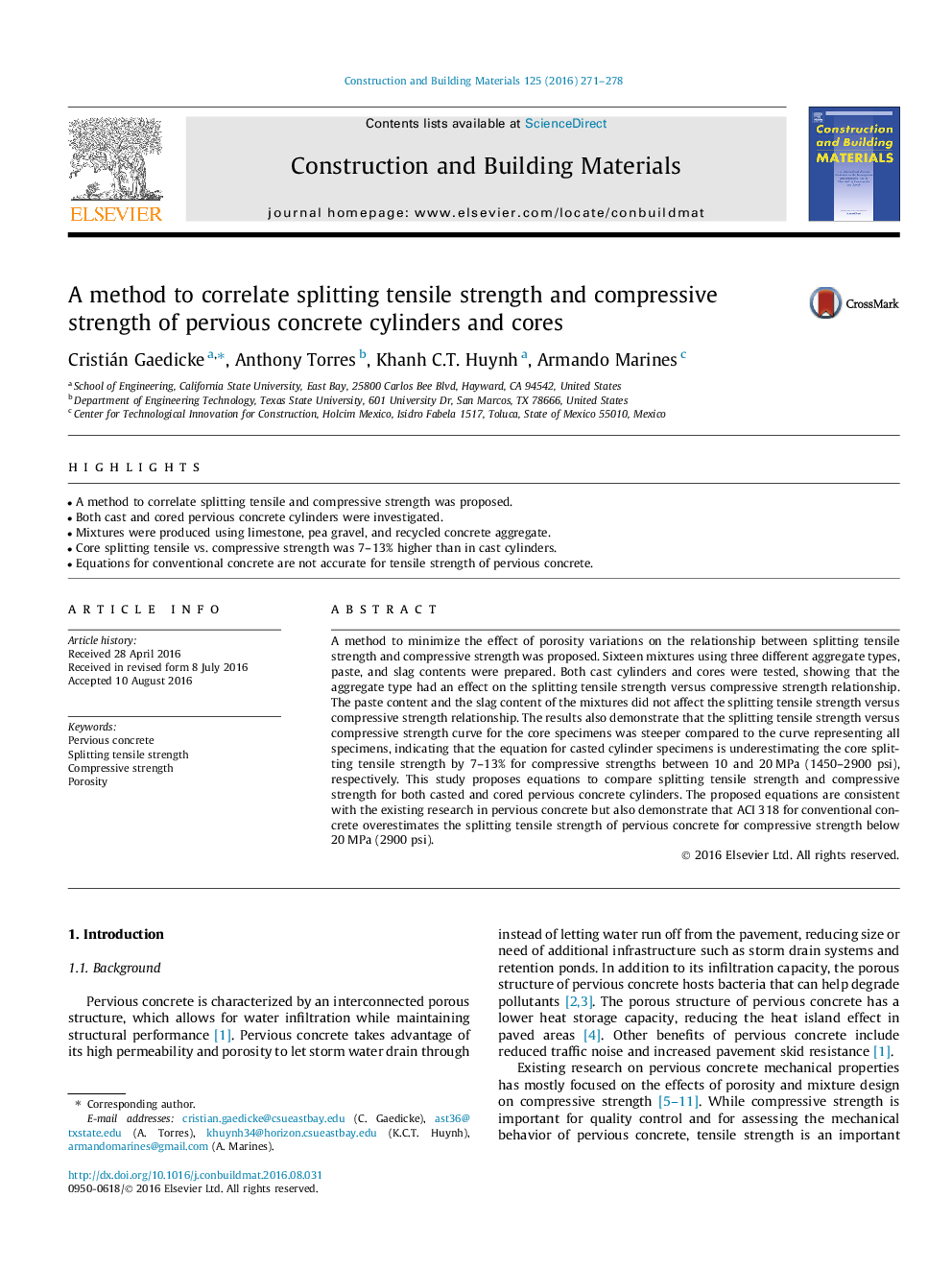| Article ID | Journal | Published Year | Pages | File Type |
|---|---|---|---|---|
| 4918615 | Construction and Building Materials | 2016 | 8 Pages |
Abstract
A method to minimize the effect of porosity variations on the relationship between splitting tensile strength and compressive strength was proposed. Sixteen mixtures using three different aggregate types, paste, and slag contents were prepared. Both cast cylinders and cores were tested, showing that the aggregate type had an effect on the splitting tensile strength versus compressive strength relationship. The paste content and the slag content of the mixtures did not affect the splitting tensile strength versus compressive strength relationship. The results also demonstrate that the splitting tensile strength versus compressive strength curve for the core specimens was steeper compared to the curve representing all specimens, indicating that the equation for casted cylinder specimens is underestimating the core splitting tensile strength by 7-13% for compressive strengths between 10 and 20Â MPa (1450-2900Â psi), respectively. This study proposes equations to compare splitting tensile strength and compressive strength for both casted and cored pervious concrete cylinders. The proposed equations are consistent with the existing research in pervious concrete but also demonstrate that ACI 318 for conventional concrete overestimates the splitting tensile strength of pervious concrete for compressive strength below 20Â MPa (2900Â psi).
Related Topics
Physical Sciences and Engineering
Engineering
Civil and Structural Engineering
Authors
Cristián Gaedicke, Anthony Torres, Khanh C.T. Huynh, Armando Marines,
